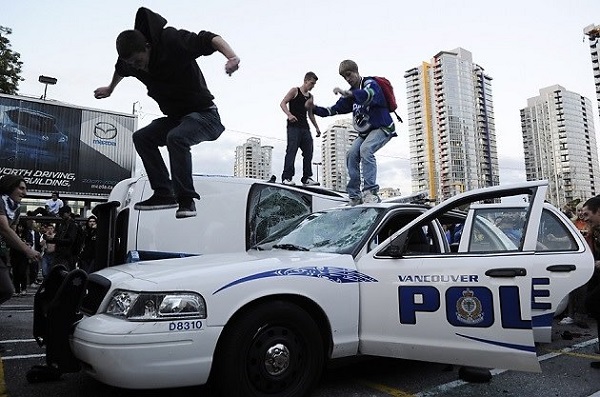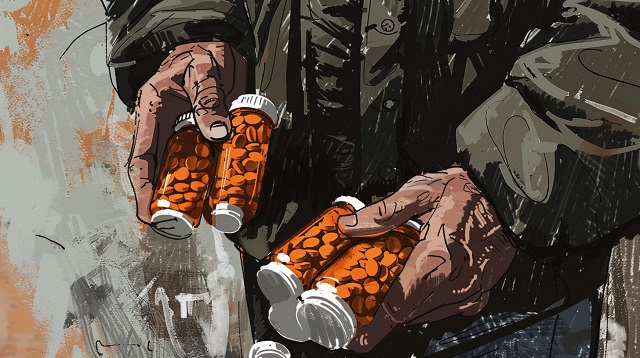Opinion
Journalism: Back to Basics

How cool is it that in the 21st century it isn’t just news anchors, professional investigative journalists or beat reporters that bring us news and current events? Today, average JoAnne Public contributes to a globally collective knowledge. What is less cool, however, is the vast amount of not-really journalistic style writing that permeates media with biased opinions or fake news. Sometimes it’s hard to decipher good journalistic pieces from stories rife with personal beliefs or judgements. Whether you are a reader or writer of today’s news, keeping an eye out for just a few ‘tells’ means you’ll perhaps consume or create more real news and fewer opinion pieces.
Accuracy
It’s pretty exciting to be the first to report a story, or to read the earliest account of a story. You know what is less exciting? Finding out you read misinformation after you shared it with friends, or learning you released a story before all your facts were confirmed. It is far better to be right than to be first; both as a reader and a writer. I think we can all agree that anything premature is, well…not great.
Sources
Remember back in school when you had to write a bibliography to prove where you found your information? The same basic rules apply to good news reporting too. Although citations don’t always have to be formal, there should be some mention of the source of the information. This doesn’t mean confidential contributors should be named, though. Sometimes protection of privacy is important to a story!
Naming sources not only lends credibility to a story, but doing so supports the validity of any quoted numbers or stats too. For example, I could tell you eleventy nine percent of drivers pick their noses at a stop light. If I don’t also tell you which studies prove this, shouldn’t you question the legitimacy of that statistic?
Free from Bias
Good reporting demands sharing all sides of a story. We’ve all read stories about kids constantly on their devices today and never looking up to experience the people right in front of them. Presumably, they’re on social media, playing games, and generally wasting their lives. But what about the kid texting a parent living away from the family home, or communicating with a teacher about an assignment, or talking a friend through a trying time? Do we also get to read about how those kids are experiencing real relationships, trauma, joy, or easing the loneliness of a loved one through their device? Do we get to learn about how that kid is making a difference in the life of another not sitting in that group?
It’s important for good journalism to tell all sides of the story without injecting personal views, emotional attachment to one side or the other, and to keep stereotypes out of the story. According to the Reuters Handbook of Journalism, although it’s acceptable to include other people’s opinions in a story, the writer should steer clear of expressing their own opinions. So as long as both the kid with her face in her device AND, for example, the disapproving onlooker both have a voice in a story, it all balances out!
We all know if it’s on the Internet it must be true, but keeping an eye out for legitimate journalism fosters the smartitude in all of us.
Bruce Dowbiggin
Do It Once, Shame On You; Do It Twice, Shame On Me

Now that the annoying Toronto Maple Leafs business (In Toronto The Leafs Always Fall In Spring ) is in the rearview mirror it’s time to turn Canada’s yearning eyes to… the Vancouver Canucks? Okay, the Edmonton Oilers are in the second round, too, playing the Canucks. But it’s the unlikely re-appearance of the Nucks, like some Ogopogo on skates, that commands the curious attention of Canadians.
While Edmonton may even win the Cup this year— should its forward-heavy strategy work better than it did for the Maple Leafs— seeing the team in blue and green re-emerge after eight seasons out of eleven with no playoffs— no postseason since 2020— has some intriguing side stories. It’s been bleak since the owner blew up his team in 2013 for fear of losing a few season-ticket holders.
Vancouver is the only Canadian team to go to Game 7 twice in the Finals since Montreal won the Cup in 1993. In 1994 it was defeat at the hands of Mark Messier and the Rangers. In 2011 it was the bastard, er… Boston Bruins who skated away with the Cup in seven. And, as everyone at HNIC reminds us, Calgary (2004), Edmonton (2006), Ottawa (2007) and Montreal (2021) all fell in the Final, too. But that’s it. Seven spins of the Plinko in 31 years.
With NHL ensuring that only one of the two remaining Canadian clubs will advance after this round, the chances of a Canadian team making it eight Finals in 31 years are slim. So why not the team that plays at 10 PM ET all the time, the team that was predicted to be among the League’s worst this year. Your Vancouver Canucks. After all, it would be so perfect for the team from the home of loony politics to win the Cup.
Primary among them is the symmetry of the Hamas disturbances across the county today that recall the 2011 Canucks riot that followed the Game Seven loss by Alain Vigneault’s team. For those who don’t remember, the bitter loss fused overly refreshed Canucks fans with an element that had nothing to do with hockey on a warm summer night.

As the fans streamed away from the Rogers Centre and the open-air watch parties, the now-familiar masked balaclava-wearing, backpack toting radicals moved among them, whipping up the fans’ monumental disappointment with urges to vandalize and loot. Viewers saw an incongruous picture of these fifth columnists and fans in the team jersey becoming involved in the smashing of windows and setting of fires. Sure, Montreal had seen recent riots after Stanley Cups but there was little element of politics in the drunken behaviour.
Not Vancouver. Not in 2011. Seeing the random anarchists and looters on Granville and Robson Streets the question was, “Why were the cops and elected officials so unprepared?”

It was an unsettling conclusion to a season of so much good feeling in Vancouver, staining the memory of a gifted hockey team that simply ran out of healthy bodies. The most common reaction to the riots was “Who were those non-hockey people in the riot?” There were jokes about the instigators were 257 Daniel Sedins, 319 Henrik Sedins and 195 Roberto Luongos. But they fell flat.
Many were shocked to see so many anarchists, Marxists, radical climate freaks, petty criminals and psychopaths in their midst. Like the reaction to the Palestinian mobs waving Death To Jews and From The River to the Sea, the impact on average Canadians— the kind who watch hockey, not Mao, as a religion— was unsettling. The damages soared into the tens of millions as Vancouver’s looked at a burned-out downtown and asked, “What happened?”
Later investigations revealed a large contingent of the rioters came from as far away as the Pacific Northwest and California. This was an organized event. Again, how did so many people with evil intent get into the country? The answer to most of the questions was very Canadian. People thought it couldn’t happen here.
It’s what most are saying about the Hamas-inspired wave of crime and insubordination now on screens. Canadians have always been so liberal and self effacing. How did they end up branded by homicidal Hamas as supporting the murder of babies? Isn’t there supposed to be some pay-off for being kind and opening the doors to unchecked immigration from countries where terror and instability are the watchwords?

What is just as unnerving about the Palestinian intifada ugliness is the realization that, memories of 2011, the anti-Israel demonstrators represent only a part of the mobs denying entry to Jewish students at schools or blocking traffic or defacing buildings with messages of hate. It’s clear that anti-capitalist nihilists are in equal numbers in the crowds, whipping up hapless coeds, grad-school nimrods and nutty professors with their messages.
Worse, the uniform tents, signs, chants and more across the continent are the products of donors linked to some of the most famous names in finance— Rockefeller, Gates, Soros.
Citizens are right to wonder how the toxic politics of the Middle East has fused with a bottomless pit of money to upend their capitalist society. And to realize that the liberal tenets of toleration and friendliness espoused by feckless politicians have only brought on this crisis.
And to think that most thought it all behind them after they’d cleaned up the broken glass and burned cars in 2011. As they say, do it once, shame on you. Do it twice, shame on me.
Bruce Dowbiggin @dowbboy is the editor of Not The Public Broadcaster A two-time winner of the Gemini Award as Canada’s top television sports broadcaster, he’s a regular contributor to Sirius XM Canada Talks Ch. 167. Now for pre-order, new from the team of Evan & Bruce Dowbiggin . Deal With It: The Trades That Stunned The NHL & Changed Hockey. From Espo to Boston in 1967 to Gretz in L.A. in 1988 to Patrick Roy leaving Montreal in 1995, the stories behind the story. Launching in paperback and Kindle on #Amazon this week. Destined to be a hockey best seller. https://www.amazon.ca/Deal-Trades-Stunned-Changed-Hockey-ebook/dp/B0D236NB35/
Addictions
Canada’s ‘safer supply’ patients are receiving staggering amounts of narcotics

Image courtesy of Midjourney.
|
|
How a Small Population Fuels a Black Market Epidemic, Echoing Troubling Parallels in Sweden
A significant amount of safer supply opioids are obviously being diverted to the black market, but some influential voices are vehemently downplaying this problem. They often claim that there are simply too few safer supply clients for diversion to be a real issue – but this argument is misleading because it glosses over the fact that these clients receive truly staggering amounts of narcotics relative to everyone else.
“Safer supply” refers to the practice of prescribing free recreational drugs as an alternative to potentially-tainted street substances. In Canada, that typically means distributing eight-mg tablets of hydromorphone, an opioid as potent as heroin, to mitigate the use of illicit fentanyl.
There is clear evidence that most safer supply clients regularly sell or trade almost all of their hydromorphone tablets for stronger illicit substances, and that this is flooding communities with the drug and fuelling new addictions and relapses. Just five years ago, the street price of an eight-mg hydromorphone tablet was around $20 in major Canadian cities – now they often go for as little as $1.
But advocates repeatedly emphasize that, even if such diversion is occurring, it must be a minor issue because there are only a few thousand safer supply clients in Canada. They believe that it is simply impossible for such a small population to have a meaningful impact on the overall black market for diverted pharmaceuticals, and that the sudden collapse of hydromorphone prices must have been caused by other factors.
This is an earnest belief – but an extremely ill-informed one.
It is difficult to analyze safer supply at the national level, as each province publishes different drug statistics that make interprovincial comparisons near-impossible. So, for the sake of clarity, let’s focus primarily on B.C., where the debate over safer supply has raged hottest.
According to a dashboard published by the British Columbia Centre for Disease Control, there were only 4,450 safer supply clients in the province in December 2023, of which 4,250 received opioids. In contrast, the 2018/19 British Columbia Controlled Prescription Drug Atlas (more recent data is unavailable) states that there were approximately 80,000 hydromorphone patients in the province that year – a number that is unlikely to have decreased significantly since then.
We can thus reasonably assume that safer supply clients represent around 5 per cent of the province’s total hydromorphone patients – but if so few people are on safer supply, how could they have a profound impact on the black market? The answer is simple: these clients receive astonishing sums of the drug, and divert at an unparalleled level, compared to everyone else.
Safer supply clients generally receive 4-8 eight-mg tablets per day at first, but almost all of them are quickly moved up to higher doses. In B.C., most patients are kept at 14 tablets (112-mg in total) per day, which is the maximum allowed by the province’s guidelines. For comparison, patients in Ontario can receive as many as 30 tablets a day (240-mg in total).
These are huge amounts.
The typical hydromorphone dose used to treat post-surgery pain in hospital settings is two-mg every 4-6 hours – or roughly 12-mg per day. So that means that safer supply clients can receive roughly 10-20 times the daily dose given to acute pain patients, depending on which province they’re located in. And while acute pain patients are tapered off hydromorphone after a few weeks, safer supply clients receive their tablets indefinitely.
Some chronic pain patients (i.e. people struggling with severe arthritis) are also prescribed hydromorphone – but, in most cases, their daily dose is 12-mg or less. The exception here is terminally ill cancer patients, who may receive up to around 100-mg of hydromorphone per day. However, this population is relatively small, so we once again have a situation where safer supply patients are, for the most part, receiving much more hydromorphone than their peers.
Not only do safer supply patients receive incredible amounts of the drug, they also seem to divert it at much higher rates – which is a frequently overlooked factor.
The clandestine nature of prescription drug diversion makes it near-impossible to measure, but a 2017 peer-reviewed study estimated that, in the United States, up to 3 per cent of all prescription opioids end up on the black market.
In contrast, it appears that safer supply patients divert 80-90 per cent of their hydromorphone.
These numbers should be taken with a grain of salt, as there have been no attempts to measure safer supply diversion – harm reduction researchers tend to simply ignore the problem, which means that we must rely on journalistic evidence that is necessarily anecdotal in nature. While this evidence has its limits, it can, at the very least, illustrate the rough scale of the problem.
For example, in London, Ontario, I interviewed six former drug users last summer who said that, of the safer supply clients they knew, 80 per cent sold almost all of their hydromorphone – just one interviewee placed the number closer to 50 per cent. More recently, I interviewed an addiction outreach worker in Ottawa who estimated that 90 per cent of safer supply clients diverted their drugs. These numbers are consistent with the testimony of dozens of addiction physicians who have said that safer supply diversion is ubiquitous.
Let us take a conservative estimate and imagine that only 30 per cent of safer supply hydromorphone is diverted – even this would be potentially catastrophic.
So we can see why any serious attempt to discuss safer supply diversion cannot narrowly focus on patient numbers – to ignore differences in doses and diversion rates is inexcusably misleading.
But we don’t need to rely on theory to make this point, because the recent parliamentary testimony of Fiona Wilson, who is deputy chief of the Vancouver Police Department and president of the B.C. Association of Chiefs of Police (BCACP), illustrates the situation quite neatly.
Wilson testified to the House of Commons health committee earlier this month that half of the hydromorphone recently seized in B.C. can be attributed to safer supply. As she did not specify whether the other half was attributed to other sources, or simply of indeterminate origin, the actual rate of safer supply hydromorphone seizures may actually be even higher.
As, once again, safer supply clients constitute roughly 5 per cent of the total hydromorphone patient population, Wilson’s testimony suggests that, on a per capita basis, safer supply patients divert at least 18 times more of the drug than everyone else.
This is exactly what one would expect to find given our earlier analysis, and these facts, by themselves, repudiate the argument that safer supply diversion is insignificant. When a small population is at least doubling the street supply of a dangerous pharmaceutical opioid, this is a problem.
The fact that so few people can cause substantial, system-wide harm is not unprecedented. In fact, this exact same problem was observed in Sweden, which, from 1965-1967, experimented with a model of safer supply that closely resembled what is being done in Canada today. A small number of patients – barely more than a hundred – were given near-unlimited access to free recreational drugs under the assumption that this would keep them “safe.”
But these patients simply sold the bulk of their drugs, which caused addiction and crime rates to skyrocket across Stockholm. Commentators at the time referred to safer supply as “the worst scandal in Swedish medical history,” and, even today, the experiment remains a cautionary tale among the country’s drug researchers.
It is simply wrong to say that there are too few safer supply clients to cause a diversion crisis. People who make this claim are ignorant of contemporary and historical facts, and those who wish to position themselves as drug experts should be mindful of this, lest they mislead the public about a destructive drug crisis.
This article was originally published in The Bureau, a Canadian publication devoted to using investigative journalism to tackle corruption and foreign influence campaigns. You can find this article on their website here.
-

 Economy2 days ago
Economy2 days ago‘Gambling With The Grid’: New Data Highlights Achilles’ Heel Of One Of Biden’s Favorite Green Power Sources
-

 conflict1 day ago
conflict1 day agoOver 200 Days Into War, Family Of American Hostage in Gaza Strives For Deal To Bring Son Home
-

 Brownstone Institute24 hours ago
Brownstone Institute24 hours agoBook Burning Goes Digital
-

 Brownstone Institute13 hours ago
Brownstone Institute13 hours agoThe Predictable Wastes of Covid Relief
-

 ESG2 days ago
ESG2 days agoTennessee Taking Lead In Protecting Civil Rights And Free Enterprise—And Stopping Political Debanking
-

 Alberta4 hours ago
Alberta4 hours agoGame changer: Trans Mountain pipeline expansion complete and starting to flow Canada’s oil to the world
-

 Addictions4 hours ago
Addictions4 hours agoCanada’s ‘safer supply’ patients are receiving staggering amounts of narcotics
-

 Energy2 days ago
Energy2 days agoMarket Realities Are Throwing Wrench In Biden’s Green Energy Dreams









